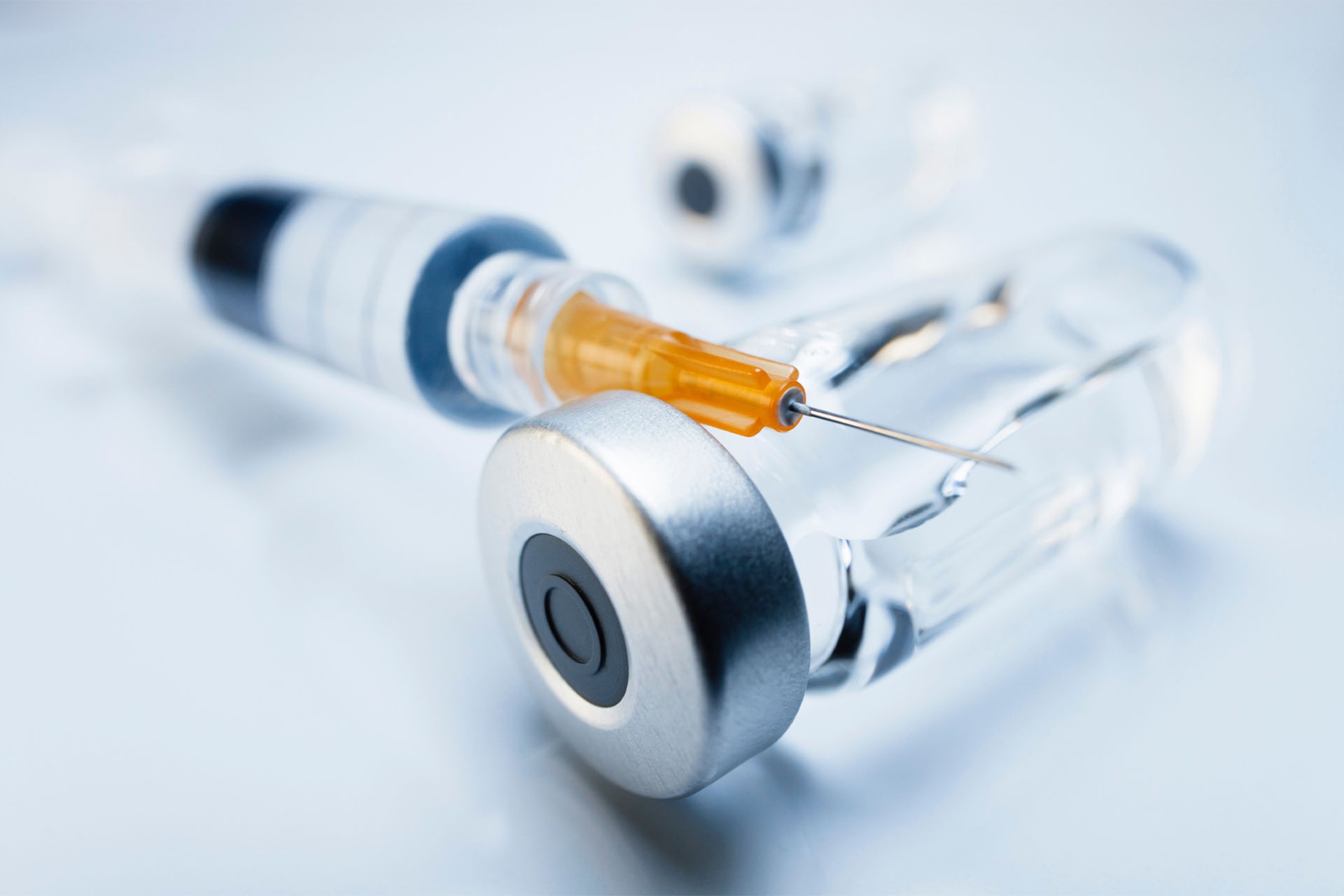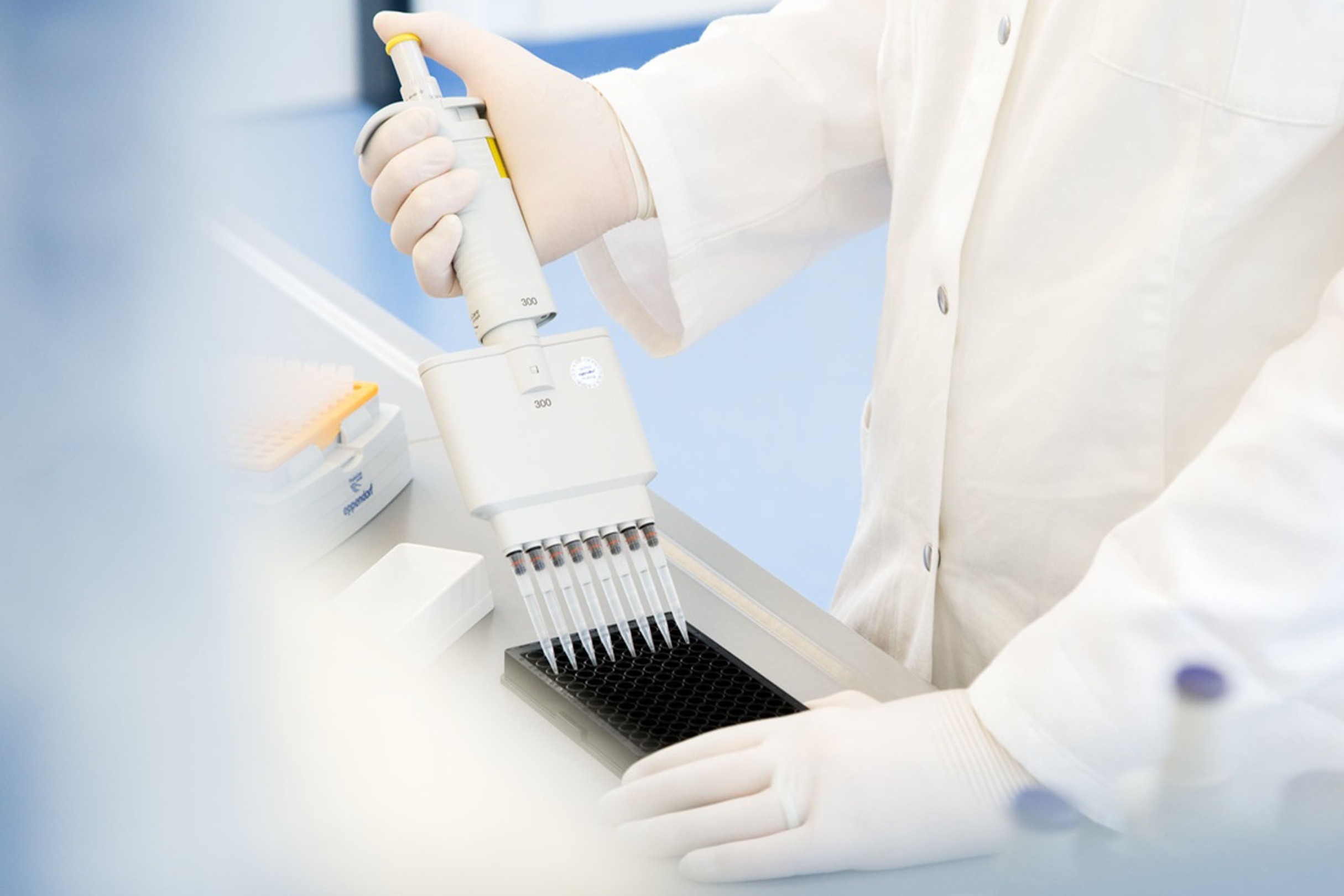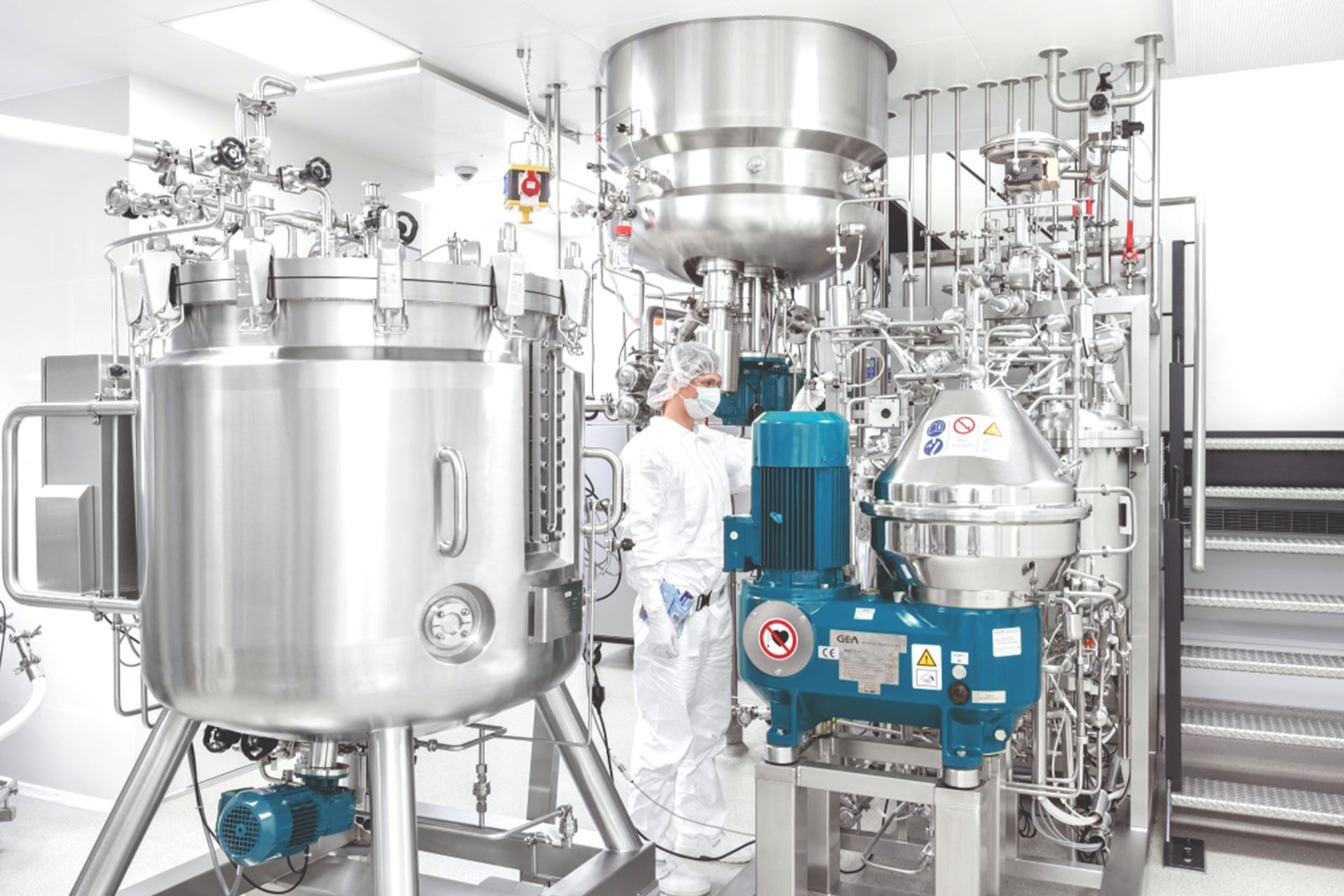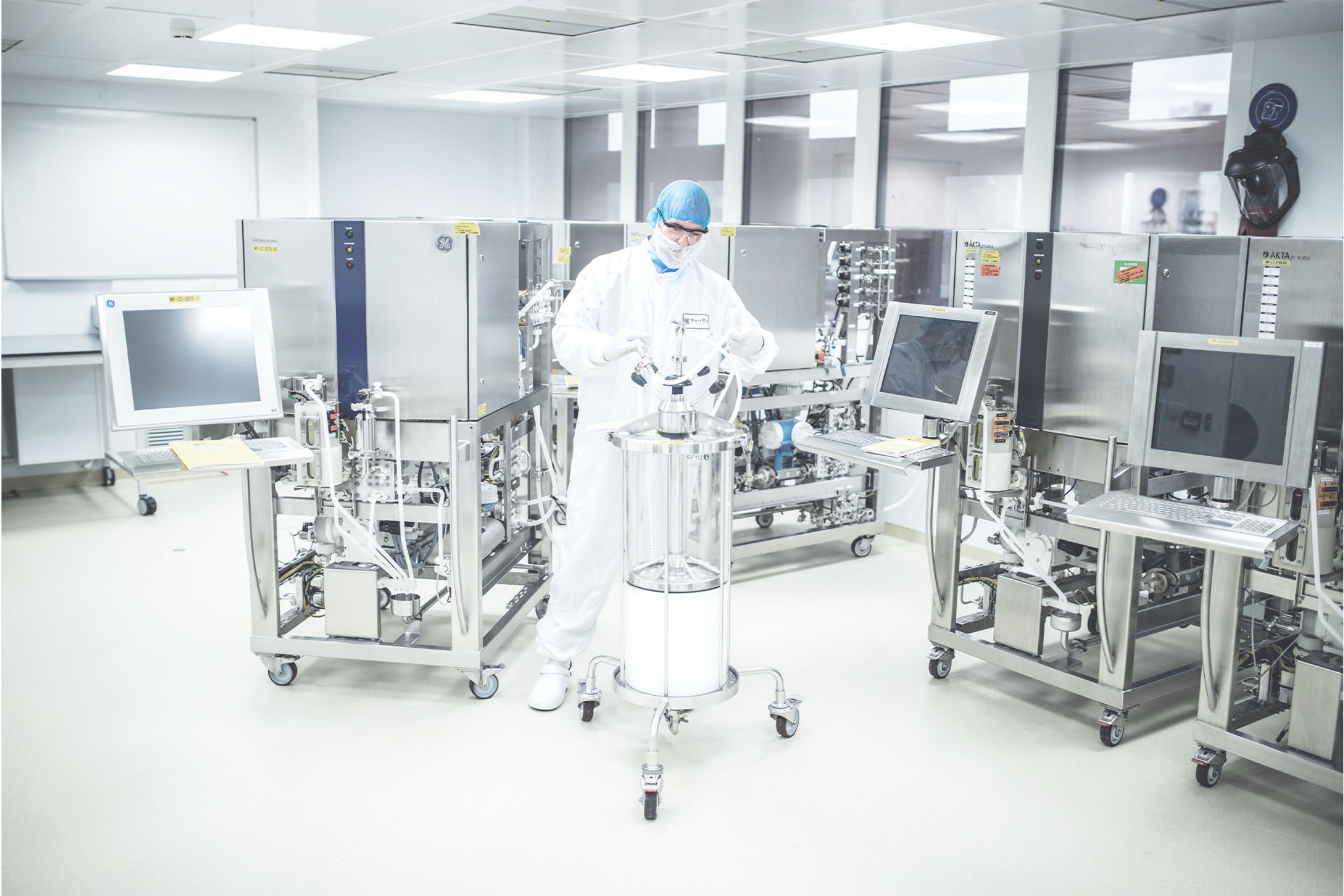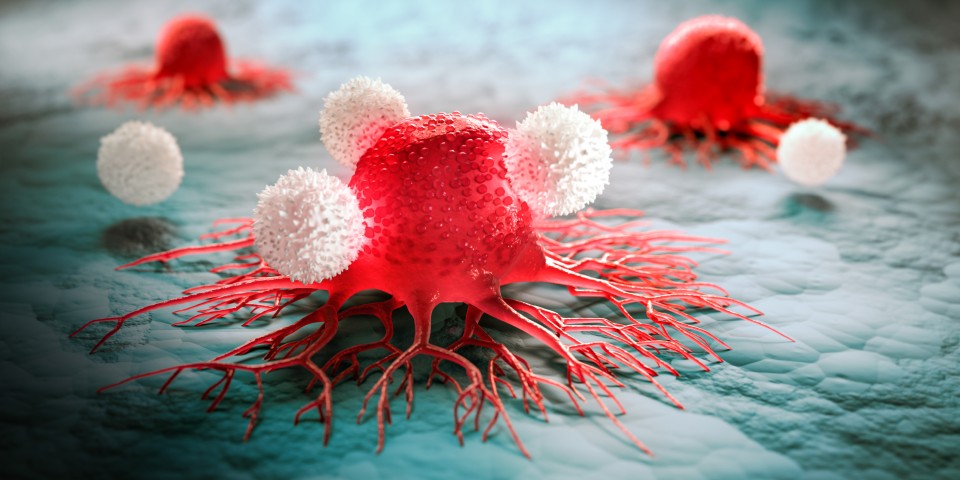
Vaccines
Pharmaceutical companies and research institutes have been contracting Wacker Biotech to produce vaccines for 20 years.
Oct 05, 2020 Read time: approx. MinutesMinute
Training the Immune System
The coronavirus has shown how important vaccines are for keeping the body’s defenses in shape to combat dangerous infections. The experts at Wacker Biotech have 20 years of experience producing vaccines based on microbial systems.
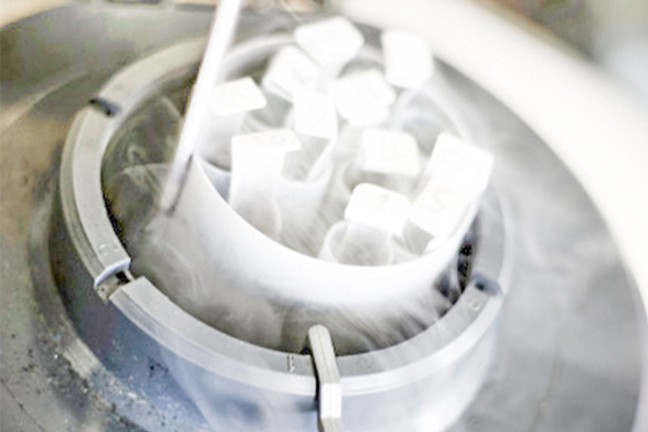
They’re on your skin, in your digestive tract, in the air and on the sea floor: we’re surrounded by billions of bacteria and viruses. They live on us and in us. Invisible to the naked eye, most of these tiny organisms are harmless, and some of them are even critical to our survival. Some, however, make us sick, potentially triggering severe, even life-threatening illnesses.
Vaccines offer protection from an array of infectious diseases, such as polio, typhoid fever, cholera, hepatitis A and B, HPV and smallpox, which, thanks to a global immunization campaign, was eradicated in 1980. Nevertheless, new pathogens and variations of known pathogens arise again and again. The list is long. And it brings home one important lesson: vaccines are, along with the development of antibiotics, the cornerstones of modern medicine. The World Health Organization (WHO) estimates that vaccines save two to three million lives each year and prevent countless people from falling ill.
“We develop production processes and produce vaccines for our pharmaceutical industry customers, but we don’t do the corresponding concept development or marketing ourselves.”
Dr. Phillipe Cronet, Director of Global Bioprocess Development, Wacker Biotech
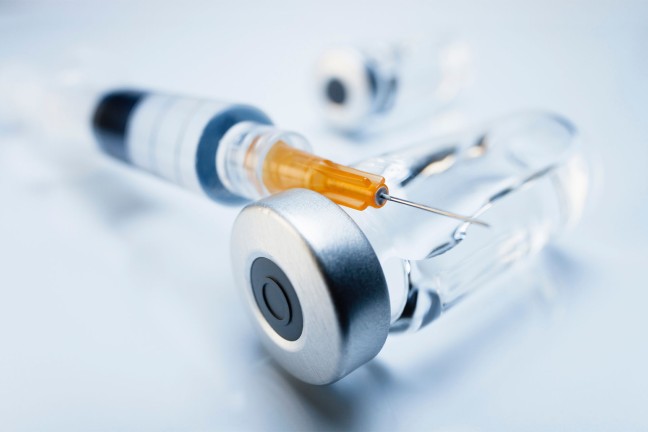
Our pharmaceutical proteins are delivered to customers in ready-to-use packaging.
The Immune System Forms Memory Cells
Vaccines do this by playing a trick on the body, leading it to believe it has been infected with a pathogen. The trick works by selectively exposing the body to either all or part of a killed or weakened organism. Not enough to cause disease, but enough to put the immune system on high alert. which reacts by forming antibodies to fight the virus or disease-causing bacterium – an immune response, in other words. This is also when memory cells are formed, allowing the body to remember the pathogen, even once the acute danger has passed. If the individual is infected again at a later point in time, the immune system will be prepared for it.
Researchers are now working round-the-clock on a vaccine for the SARS-CoV-2 virus, which can trigger the respiratory illness COVID-19. The disease was first detected in December 2019 in Wuhan, a city home to millions of people in the Hubei province of China. In January 2020, the illness developed into an epidemic in China, ultimately spreading around the world to become a pandemic. Because the SARS-CoV-2 coronavirus had been unknown up to that point, it is often referred to as the “novel” coronavirus. According to the World Health Organization, 100 projects aimed at the development of a vaccine are currently underway (as of May 2020).
Not All Vaccines are Created Equal
As part of that effort, pharmaceutical companies all over the world working on very different kinds of vaccines. “Not all vaccines are created equal,” explains Dr. Philippe Cronet, who leads the development of biotechnological production processes at Wacker Biotech – an area of responsibility that includes vaccine manufacturing. Pharmaceutical companies and research institutes have been contracting Wacker Biotech to produce vaccines for 20 years. The company’s portfolio extends from conventional live and killed vaccines to protein-based, polysaccharide and glycoconjugate vaccines. The field is large, and development is ongoing.
“One option is to use the pathogen itself in the vaccine – in either a weakened or inactive form,” Cronet explains. The organisms in live vaccines are capable of reproducing, but they can no longer cause illness, and the resulting live vaccines are referred to as attenuated, i.e., weakened. Many of these vaccines – those that prevent childhood diseases such as mumps, measles and rubella – confer life-long immunity. Inactivated vaccines on the other hand, which are also referred to as killed vaccines, contain either a dead pathogen or part of an inactive virus to which the immune system responds. The protective immunity provided by killed vaccines generally only lasts for a few years, after which it will need to be stimulated once again.
How Viruses and Bacteria Trigger Infectious Diseases
Viruses
Viruses are invisible to the naked eye and can only be seen with an electron microscope. Many look like tadpoles with tails, others are rod-shaped or resemble spheres. Their inner workings are relatively simple. Unlike bacteria, they have no metabolic processes of their own and consist of nothing but their genetic material. Strictly speaking, viruses are not even living things. And yet they can be hazardous to humans – the very simplicity of these tiny organisms is what makes them so dangerous. Viruses possess neither cytoplasma nor ribosomes, they cannot copy their genetic material, and they cannot make their own shells. This is why they replicate by attacking foreign cells and injecting their genetic material into them. Once inside the host cell, the virus reprograms the cell’s own genetic information, forcing the host to produce virus particles from that point onward. Those particles, in turn, attack new cells. Once set in motion, this process destroys cells in the body. Diseases caused by viruses include the flu, herpes, AIDS, hepatitis, and the respiratory illness COVID-19.
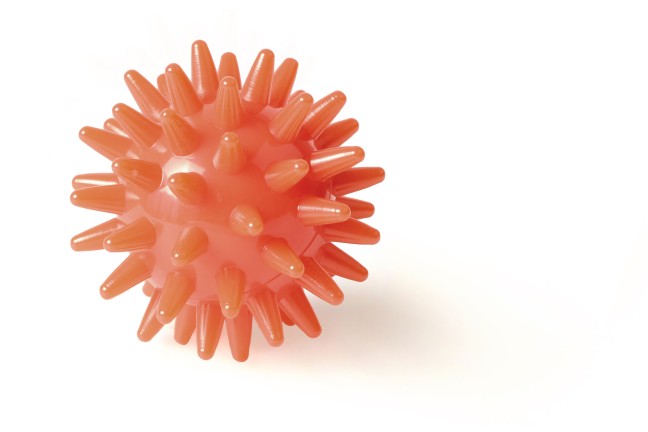
Bacteria
Bacteria are many times larger than viruses: 0.1 to 700 micrometers. And, unlike viruses, they are living things – self-sufficient, single-celled organisms. They have their own genetic material, their own metabolism and they reproduce through cell division. Most bacteria pose no threat to human beings, and some are extremely useful, such as those that support digestion in the human intestinal tract. Only about 1 percent cause disease. When these bacteria enter the human body, they produce toxic metabolites that result in an infection. Familiar examples of these bacteria are those in the genus Salmonella, which cause food poisoning. Tuberculosis and whooping cough are caused by bacteria as well. Species of bacteria that are actually harmless and that live in or on the human body can also trigger an infection as soon as the immune system is weakened. One example here is pneumococcus, which can cause meningitis. While pneumococcal bacteria can be present in the noses and throats of many people without producing disease, dangerous inflammations can develop when they come into contact with older people, children or other immunocompromised individuals.
A New Direction in the 1990s
Most of today’s vaccines are inactivated varieties developed from only select molecules of a pathogen. The use of genetic engineering to produce them has become increasingly common since the 1990s. These kinds of vaccines contain individual, characteristic proteins of a pathogen intended to produce an immune response within the body. For these to work, boosters known as adjuvants often need to be added. The same applies to what are known as polysaccharide vaccines, which use polysaccharides taken from the shell of a bacterium or virus to prompt an immune response. In order to amplify the effect, scientists in the 1990s also developed conjugated polysaccharide vaccines (conjugate vaccines), in which polysaccharides were bound to proteins. “These conjugates trigger a stronger immune response and provide longer-lasting protection than the antigen alone,” Cronet explains.
Promising New Class of Vaccines
Vaccines based on nucleic acids – the DNA or messenger RNA (mRNA) of a virus – represent a relatively new class of drugs offering a highly sophisticated immunization strategy. The vaccine contains only the blueprint of the DNA or mRNA of the virus, which the body uses as a basis for producing antigens. The immune system recognizes these antigens as foreign and fights them off – a trial run for a real infection without ever coming into contact with the pathogen itself.
“Vaccines based on nucleic acids are a very promising alternative to conventional vaccines,” Cronet observes. “They offer a number of advantages. The most significant of which is their minimalist structure, which reduces development and production time. The only thing you have to produce is genetic material, after all. You don’t have to culture the pathogen itself. And that eliminates a very time-consuming step.” Up to now, however, no nucleic-acid-based vaccines have been approved for use in humans – all of the candidate actives are still in the development phase. Some products have already been approved, however, in another relatively new class of vaccines: viral vectors. Here the vaccine is based on a harmless virus that has been genetically engineered to contain a characteristic, but harmless component of the dangerous pathogen. A vaccine based on a viral vector has recently been approved for Ebola.
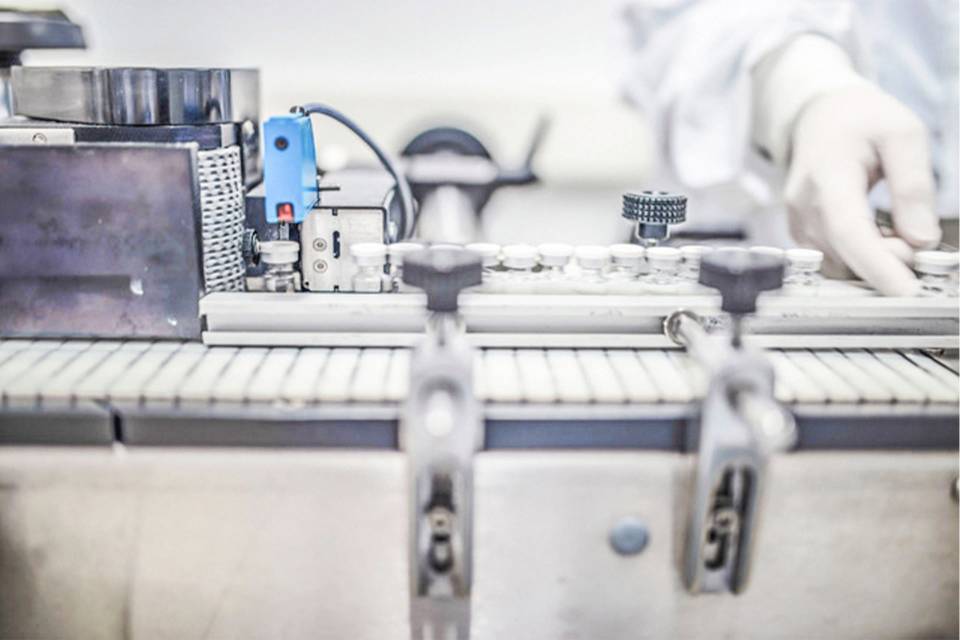
About WACKER Biotech
Wacker Biotech GmbH and Wacker Biotech B.V. are full-service contract manufacturers of therapeutic proteins, LMPs and vaccines based on microbial systems. The company’s portfolio extends from strain/process development to analytical testing to GMP production for clinical and commercial applications. Wacker Biotech maintains three GMP-compliant, FDA- and EMA-certified production plants in Amsterdam and at its German sites in Jena and Halle in Germany. Wacker Biotech GmbH and Wacker Biotech B.V. are wholly owned subsidiaries of the Munich-based WACKER Group.
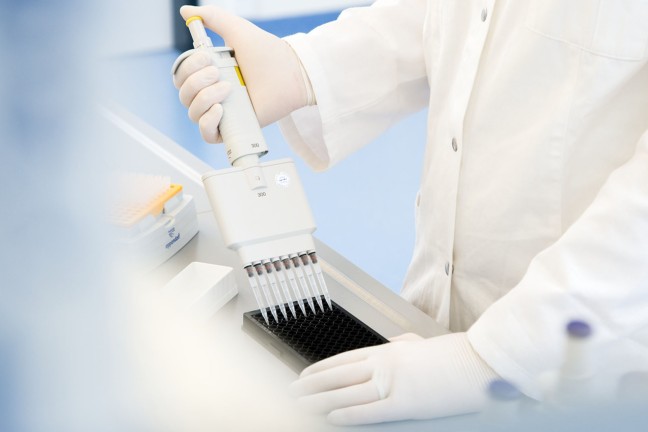
Before the large-scale production of a vaccine can begin, the first step is to develop the production process in the lab.
Quicker Response to Novel Viruses
Several research institutes are also looking to this new class of vaccines to combat the SARS-CoV-2 virus. According to the journal Nature, 20 projects throughout the world are currently underway with the aim of bringing an RNA- or DNA-based vaccine for the novel coronavirus to the market. Twenty-five projects for developing viral vectors have been launched as well (as of April 2020). Current efforts to combat the coronavirus pandemic could pave the way for these new classes of vaccine.
“The rapid spread of severe infections like SARS, Ebola, and now the SARS-CoV-2 virus once again underscores the need for developing new vaccine technologies so that we can respond to novel viruses more quickly and effectively,” says Cronet. Wacker Biotech will also be looking into research on nucleic-acid-based vaccines.
Wacker Biotech’s Role as a CDMO
As a CDMO (contract and development manufacturing organization), Wacker Biotech works behind the scenes. “We develop production processes and produce vaccines for our pharmaceutical industry customers, but we don’t do the corresponding concept development or marketing ourselves,” Cronet explains. What Wacker Biotech experts do contribute are over 20 years of experience developing and producing living microorganisms, proteins and polysaccharides. These active substances are then used both in (pre)clinical studies and in commercial products.
Wacker Biotech produces vaccines at three sites: one each in Jena and Halle, Germany (Wacker Biotech GmbH), and one in Amsterdam (Wacker Biotech B.V.). Wacker Biotech GmbH and Wacker Biotech B.V. are both wholly owned subsidiaries of Wacker Chemie AG.
“The concept behind a vaccine is simple,” Cronet observes. “Developing and manufacturing one is anything but simple.” It can take ten to twelve years on average to move from the research phase to approval. In the case of a vaccine for SARS-CoV-2, however, scientists are hoping that an accelerated process could bring us to that goal within 12 to 18 months. The only reason this could work is because most vaccine candidates draw upon highly efficient development and clinical testing platforms that were devised for other pathogens. Researchers have already re-engineered existing vaccines by swapping out their genetic sequences so that they will respond to SARS-CoV-2.
From preclinical to clinical development, from vaccine manufacturing to market delivery: Wacker Biotech supports its customers the entire way. An individual production process is developed for each vaccine (candidate) and adapted to the stage of development that a given vaccine has reached. “Depending on the vaccine, that takes ten to fifteen months,” says Cronet. Once the process is in place, millions of doses of vaccine can be produced within one to two weeks.
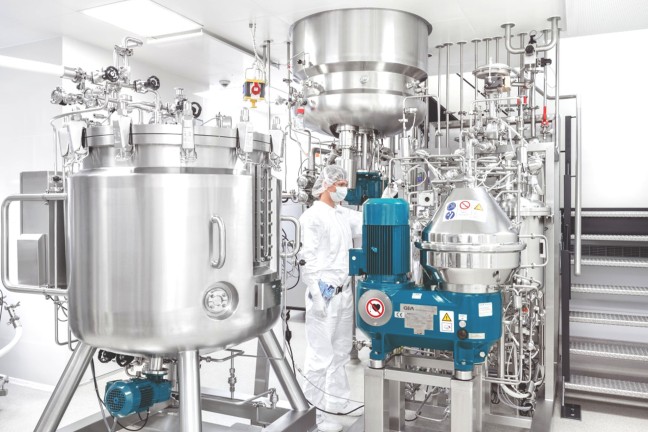
Wacker Biotech uses stainless steel tanks, called fermenters, to apply biotechnology methods that induce bacteria, in this case modified strains of E. coli, to produce the desired pharmaceutical proteins. The strict quality control to which these pharmaceutical active ingredients are subject extends to the filling process.
“All of our facilities meet the highest standards of quality and have been approved by European and US authorities.”
Dr. Phillipe Cronet, Director of Global Bioprocess Development, Wacker Biotech

Producing a Conjugated Polysaccharide Vaccine
Broad Vaccine Portfolio
Wacker Biotech has already manufactured vaccines for a wide range of infectious diseases, such as cholera, meningitis A and C, and Haemophilus influenzae type B (Hib). “At this point we’ve provided over 650 vaccine batches for clinical and commercial applications,” Cronet notes. Whereas vaccine manufacturing at Jena and Halle focuses on protein-based agents produced through the use of the bacterium Escherichia coli, the Amsterdam site makes attenuated live vaccines, polysaccharide vaccines and conjugate vaccines, too. This involves the use of an array of additional microorganisms, such as Corynebacterium diphtheriae, Salmonella typhi or Vibrio cholerae.
Production in this case proceeds in multiple steps, and these vary depending on the type of vaccine. The first step takes place in the laboratory, where what are known as precultures are prepared of the vaccine candidate that the customer has provided. This is followed by scaling up production in single-use reactors or in stainless steel tanks called fermenters. Here the bacteria produce the target active substance – in the case of a conjugate vaccine, they build the desired polysaccharides (see illustration). The polysaccarides next undergo multiple purification steps and lyophilization, after which they are chemically activated and, in the final step, bound to the carrier protein to form the finished conjugate vaccine.
Wacker Biotech sites carry out this process in facilities meeting biosafety levels of 1 (Halle and Jena) and 2 (Amsterdam), on a scale of 1 to 4. The sites produce vaccines in stainless steel tanks with capacities ranging from 270 to 1500 liters, as well as in a 250-liter single-use reactor. This allows the company to adapt production volumes as needed – small quantities of vaccine for clinical trials, larger amounts for supplying the market later on. In Amsterdam, active substances can also be dispensed into as many as 20,000 vials per batch following production. Freeze-drying (lyophilization) at the end of the production process is an option as well. “All of our facilities meet the highest standards of quality. They’ve been approved by the US Food and Drug Administration (FDA) and by the European Medicines Agency (EMA), which means we can supply the global market,” says Cronet. Wacker Biotech ships its vaccines all over world.
The Vaccine Market is Constantly Growing
Capacity utilization rates at all three Wacker Biotech sites are currently good, in part because the vaccine market is constantly growing – and not just because of the search for a SARS-CoV-2 vaccine. Scientists are continually discovering new pathogens, including many for which no vaccine currently exists. Also, because some pathogens possess the ability to adapt to their environments, there is a constant need for new vaccines to combat mutated organisms – this is why new flu vaccines are developed every year. Put in terms of actual numbers, the vaccine market is growing at an average rate of seven percent a year. Studies have indicated that this is not likely to change in the coming years. Keeping pathogens in check remains a never-ending task – and that goes for Wacker Biotech too.
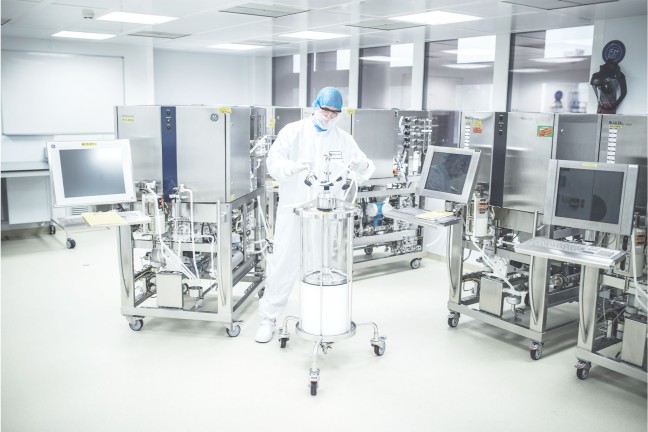
Mr. Dr. Philippe Cronet
Director Global Bioprocess Development
Wacker Biotech GmbH
+49 345 44511 450
Philippe.Cronet@wacker.com

